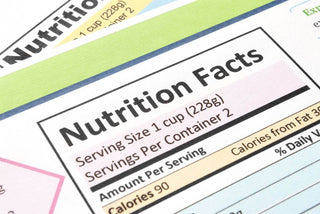Calorie counts and nutrition facts have been popping up at more and more places over the years, but have you been making use of them? Are you finding yourself making healthier choices based on this newly available information?
A little-known provision of the Affordable Care Act, which could disappear if the health care act is repealed, is a requirement that restaurants and other eateries selling ready-to-eat food show calorie counts for each standard menu item. In addition, these food establishments must note that average daily intake is based on 2,000 calories and post that detailed nutritional information is available upon request.
While some restaurants have met this standard over the last decade or so, those that haven’t are required to do so by May 5, 2017 per the FDA.
Why is this important?
More than two-thirds of Americans are overweight or obese, yet studies show that fewer than 50% say they pay a fair amount of attention to nutritional facts in restaurants. Unsurprisingly, many of them are overweight.
And while women are most likely to seek out nutritional information, a worrisome trend is that young adults aged 18-29 are the least likely, making the obesity epidemic unlikely to end soon.
The hope is that increased visibility of this information will lead to an increase in attention because nutritional facts can be an extremely helpful tool for achieving weight loss success and maintaining weight.
Still, simply paying attention isn’t enough to lower obesity rates. The real key is being able to USE what you learn from the labels to make healthier choices.
Here are the top three things you should look for on nutrition labels:
Serving Size
One package of food doesn’t necessarily mean it’s one serving. In fact, many foods and drinks that look like one serving - think your typical bag of chips or a soft drink – can actually be two or more servings! Understanding actual serving sizes can help prevent eating too many calories and knowing which foods are too calorie-dense for a sensible, healthy diet.
Calories
On most labels, calories are listed for one serving, not the entire package. So, if you’re used to finishing the whole delicious whatever, it’s important to know how many calories you’re really consuming by multiplying the number of calories with the number of servings.
“Calories from fat” is another important bit of information that shows how many of the total calories per serving come from fat.
But remember that not all fat is the same:
Unsaturated fats (“good fat”) like monounsaturated and polyunsaturated fats can be healthy and even help lower cholesterol when consumed in moderation. We usually get them from plant-based oils like olive, canola, peanut, sunflower, corn, soybean, cottonseed, and safflower, as well as nuts and oily fish such as salmon, mackerel, and trout.
Saturated and trans fats (“bad fat”) are unhealthy and can raise cholesterol levels, leading to conditions like heart disease. They’re most commonly found in meat, poultry, fish, full fat dairy products, coconut oil, palm oil, and hydrogenated oils like those found in shortening and margarine.
Percent Daily Value
This information tells you how much of a nutrient’s total daily value is in one serving, based on a 2,000 calorie diet. A good guideline to remember is:
If a food has 20% or more of the %DV, it’s high in that nutrient.
Nutrients that are good for us that we don’t get nearly enough of include fiber, vitamin A, calcium, and potassium, so look for higher values of these necessary nutrients.
If a food has 5% of the %DV or less, it’s low in that nutrient.
Bad-for-you nutrients that you want less of include saturated fat, trans fat, cholesterol, and sodium.
Trans fat is tricky because there is no recommended daily amount; instead, you may find the amount listed in grams. But it’s best to try to limit consumption of this unhealthy fat to the lowest possible amount.
And don’t be fooled by packaging claims of “low fat,” “low sodium,” “no sugar” or “low calorie.”
Research has shown that these vague claims could mean anything, from having slightly lower amounts than other similar foods, or, shockingly, having even greater amounts than comparable foods.
The best way to know what you’re really putting in your body is to pay close attention to menus, read labels, and compare the facts so you truly know which foods are best for you. Being nutrition-literate will help you be health-literate, too!

